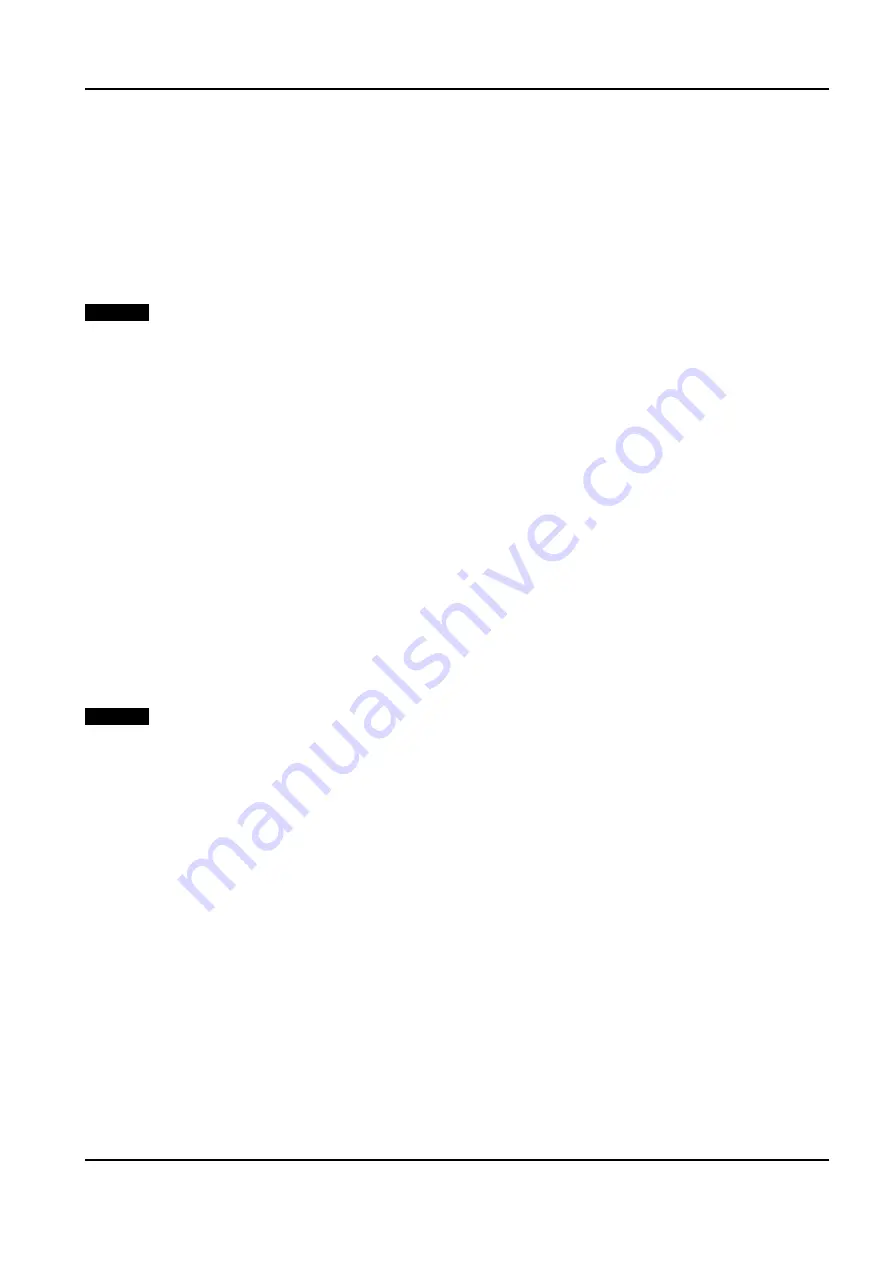
23
Peristaltic Pumps Series IP 100-800
protruding from the opening in the pump
housing matches the non-threaded part of the
studs (Fig. 18). If the hoses protrudes too far
out of the pump housing on the pressure side,
it must be completely removed and
reassembled again.
The vacuum bores in the hose
must be exactly in line. The hose
must not be twisted during
installation.
4. Completely assemble the connecting socket
on the pressure side. Alternate installation of
the new O-rings (hose) and the retaining
rings. Slightly lubricate the ventilation pipe
(pressure side) with lubrication fluid and
push it into the small hose bore and lay it
into the groove in the retaining ring.
Then insert the connecting socket carefully
into the pumping hose and tighten the
retaining flange evenly.
Switch the pump on again for a short
moment, so that the end of the hose on the
suction side is pulled to the correct
installation position.
Perform this process with utmost
attention. In case of a failure
switch off the pump immediately.
5. Insert the ventilation pipe (suction side) into
the small hose bore and slide new O-rings
(hose) and retaining rings alternately over
the pumping hose.
Make sure that the free end of the ventilation
pipe (suction side) is placed in the groove at
the inside diameter of the retaining rings.
Then insert the connecting socket into the
pumping hose and tighten the retaining
flange evenly.
6. Reinstall the drain plug (3, Fig. 13). Fill with
lubrication fluid (0.5 – 1.0 litres, see techn.
data).
7. Reinstall filler plug (do not forget the seal
ring).
5.3
Conversion suction side “top” to
suction side “bottom”
The vacuum system needs to be changed for
this purpose.
1. Switch off the pump and secure it against
restarting.
2. Disconnect the pump from the pipeline
system on suction and pressure side (see
chapter 5.2.1)
3. The ventilation pipe on suction side must be
replaced by a different version and
connected to the oil filler bore, using the
supplied fitting. The ventilation pipe on
pressure side is guided to the outside.
4. Connect suction and pressure lines
according to the new configuration.
5.4
Pump conversion for different
pumping pressure
Each peristaltic pump is adjusted to the desired
pumping pressure in the factory. However,
should a plant related change become
necessary, the desired pumping pressure can
be adjusted by installing a different rotor.
1. Switch off the pump and secure it against
restarting.
2. Remove the pumping hose (see chapter
5.2.1)
3. Remove the rotor, loosen the rotor screw for
this purpose. When loosening the rotor
screw the rotor is also extracted from the
shaft. Check shaft and fitting key for possible
damage.
4. Slide the new rotor over the shaft and tighten
the rotor screw.
5. Installing the pumping hose (see chapter
5.2.3)
Attention!
Attention!
Содержание ELRO IP 100
Страница 4: ...4 ...
















































